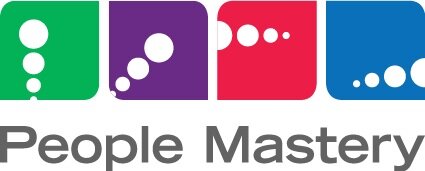What can dog trainers teach us about developing people?
I can hear the protests - ‘people are not dogs’! But paws.. (sorry, couldn’t resist! 😆). I mean PAUSE for a moment and I’ll explain.
Imagine this. You’ve just brought home your gorgeous new puppy. Let’s call him Beethoven. Bright eyed, jumping up and down, bounding with enthusiasm. Probably peeing a little bit with excitement on your kitchen floor. You’re just as excited (minus the peeing... or maybe not. I’m not judging).
You have big plans for Beethoven. He’s going to be a mountain rescue dog when he grows up. You spend the first few weeks laying out the ground rules. Beethoven is a quick learner so you get the basics in place and then… you know… life gets in the way, you get focused on other things and dog training drops quietly off your list. Before you know it a year has passed, the ‘pup’ is now a fully grown Saint Bernard and nowhere near ready for that rescue dog job.
Now here’s what every dog trainer worth their salt will tell you: when you’re training a pup, consistency and frequency are key. You need to give them regular time and attention, set clear expectations, give them opportunities to practice new behaviours and skills, praise and reward them when they do well, and redirect them when they need a little improvement. You can’t just leave them to their own devices and expect that in a year’s time they’ll be ready to step into a challenging new role.
So here’s the thing. Most of us know all this about pups. We readily apply these principles (of setting clear expectations, regular opportunities to practice and master new skills, and providing positive and constructive feedback) to children too. What has been forgotten is that the principles involved in enabling people to master new skills and build their capabilities are the same regardless of age (or species!).
There are two key points to note here.
The first is the distinction we are making between ‘training’ and ‘development’. They are not interchangeable terms. We’re using ‘training’ to cover the skills and knowledge a person needs to be competent or compliant in their current role. Think safety training, or systems and procedures training.
When we say ‘development’, however, we are talking about developing the person’s capabilities beyond their current level, either personally or professionally, and beyond simple competency in their current role. Examples might include becoming more proficient at presentations, or obtaining a diploma or degree, or developing skills that will enable them to apply for a promotion.
The second is that many leaders and organisations don’t have ‘development’ on their radar. They either ‘tick the box’ with a bit of compulsory safety training, or by asking people where they see themselves in five years during their annual performance review, or treat it as ‘done’ once they’ve got a new team member on board and settled in.
Unlike your tax return and your birthday, developing your people is NOT an annual event. It’s an ongoing conversation that happens regularly in some form, depending on the person and their needs, and is distinct from training they do simply to be competent or compliant in their current job.
And it’s incredibly important for a whole range of reasons - leaders and team members build stronger relationships and team members feel valued, which positively impacts engagement, retention and performance; team members benefit by gaining skills and capabilities that enable them to achieve their goals; the organisation is more likely to retain talent, performs better, and reduces the costs of turnover and loss of expertise… the list goes on.
So how can leaders go about developing their people?
Start a conversation with each of your team members. Be clear that it will be a regular, ongoing conversation that will be solely and specifically about their development (no role-related training in sight!).
Have these conversations regularly and consistently. Schedule them in advance and don’t let them fall off your list - if you don’t treat development as a priority, your people won’t either.
Remember every team member may have a different ‘rhythm’ (frequency, style, etc.) of ‘conversation’. Let them guide you as to what their preferred rhythm is.
Always book your next check-in before you finish the one you’re in.
And when you’re having those conversations, put on your coaching hat and:
Be present
Listen deeply
Ask great questions
Focus on who your team member wants to become
Provide both positive feedback and feedback for improvement
When you move beyond the annual event and implement a pattern of regular conversations about development which enable your people to flourish and grow, everyone will be ‘howling’ to join your team! (Hehe see what I did there? I’ll show myself out now. 😉)
For more on how to have useful development conversations with your team check out Chapter 12: ‘Developing your team’ in my book ‘on your marks, get set… LEAD!’
